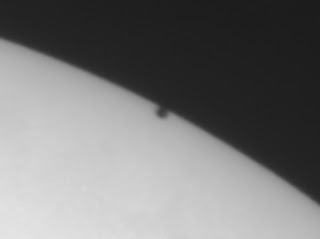To do quality astrophotography with a Meade LX200GPS telescope (by the way, mine is the 8" model) you need to be able to use a computer program star chard, a guiding camera/scope and guiding software. You will be able to take LONGER exposures and image dimmer objects in the beautiful night sky.
However, if you have a Meade LX200 GPS telescope and want to be able to use the star chart program Cartes du Ciel AND the autoguiding software program, PHD2, you may have encountered issues with both programs trying to work together to control the telescope mount. Either one will connect or the other... but both? Good luck... especially if you are using a powered USB hub at the scope mount and another USB cable that transfers the info to your computer/laptop.
I was nearly going to defork the scope and put it on another mount... when I stumbled on to the solution... AGAIN ! It seems old age is catching up with me as TWO previous posts show: May 5, 2019 and May 11, 2019. I figured this out BEFORE! LOL! Why the problem? Months of non-use and accidental disconnecting one of the key solutions to the problem.
All the same, if YOU are having this problem (not the memory one) THERE IS HOPE to get your scope up and running with a guide scope!
The issue is that the Meade hardware/software/driver will only allow one COM connection via a USB to RS232. Most of us use a device like this one:
It is a USB-A to Serial DB9 RS232 Adapter Cable (this one is 3 ft. long) and is know as a Keyspan (available through Amazon on this page).
with this cable (usually supplied with the telescope, or something like it):
The "phone cable connector" looking end is connected to the telescope mount here:
Here is the "fix" and solution to my problem:
You will notice, however that there are TWO RS232 ports on the telescope mount... and for good reason!
At least for me, I have to have TWO of these "Keyspan" USB to Serial DB9 RS232 adapters.
Each one is connected to the mount via the two RS232 ports and both are connected either to the computer (via the USB cable) or through a powered USB hub
The result is that one program will grab one Keyspan and the other can grab the other!
Occasionally I have to start the PHD2 program first, connect up with it AND then open up the star chart program and connect with the telescope with it. One might have to select which COM port the second program needs but that is no big problem to solve.
And... walla! You can control the telescope mount with the star chart program, Cartes du Ciel and have PHD2 do the fine guiding for long exposure imaging!
Hope it works for you!
However, if you have a Meade LX200 GPS telescope and want to be able to use the star chart program Cartes du Ciel AND the autoguiding software program, PHD2, you may have encountered issues with both programs trying to work together to control the telescope mount. Either one will connect or the other... but both? Good luck... especially if you are using a powered USB hub at the scope mount and another USB cable that transfers the info to your computer/laptop.
I was nearly going to defork the scope and put it on another mount... when I stumbled on to the solution... AGAIN ! It seems old age is catching up with me as TWO previous posts show: May 5, 2019 and May 11, 2019. I figured this out BEFORE! LOL! Why the problem? Months of non-use and accidental disconnecting one of the key solutions to the problem.
All the same, if YOU are having this problem (not the memory one) THERE IS HOPE to get your scope up and running with a guide scope!
The issue is that the Meade hardware/software/driver will only allow one COM connection via a USB to RS232. Most of us use a device like this one:
It is a USB-A to Serial DB9 RS232 Adapter Cable (this one is 3 ft. long) and is know as a Keyspan (available through Amazon on this page).
with this cable (usually supplied with the telescope, or something like it):
The "phone cable connector" looking end is connected to the telescope mount here:
Here is the "fix" and solution to my problem:
You will notice, however that there are TWO RS232 ports on the telescope mount... and for good reason!
At least for me, I have to have TWO of these "Keyspan" USB to Serial DB9 RS232 adapters.
Each one is connected to the mount via the two RS232 ports and both are connected either to the computer (via the USB cable) or through a powered USB hub
Notice that BOTH RS232 ports now have an occupant!
The result is that one program will grab one Keyspan and the other can grab the other!
Occasionally I have to start the PHD2 program first, connect up with it AND then open up the star chart program and connect with the telescope with it. One might have to select which COM port the second program needs but that is no big problem to solve.
And... walla! You can control the telescope mount with the star chart program, Cartes du Ciel and have PHD2 do the fine guiding for long exposure imaging!
Hope it works for you!
































